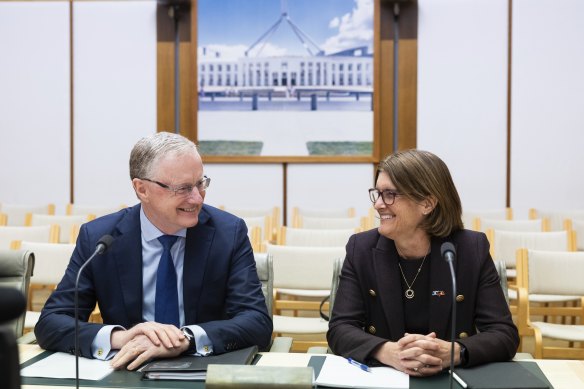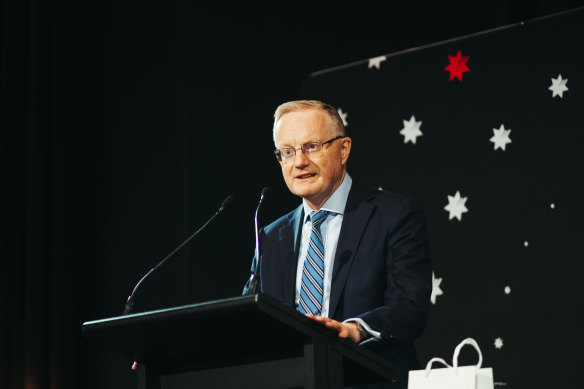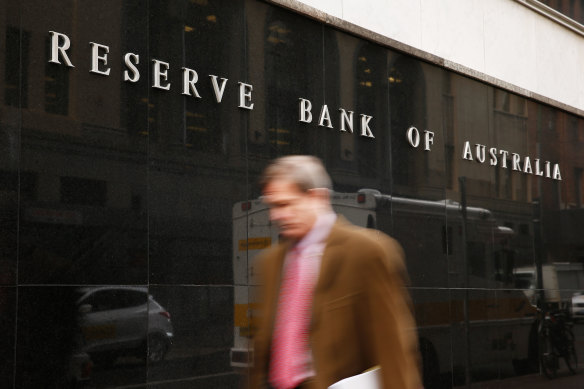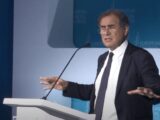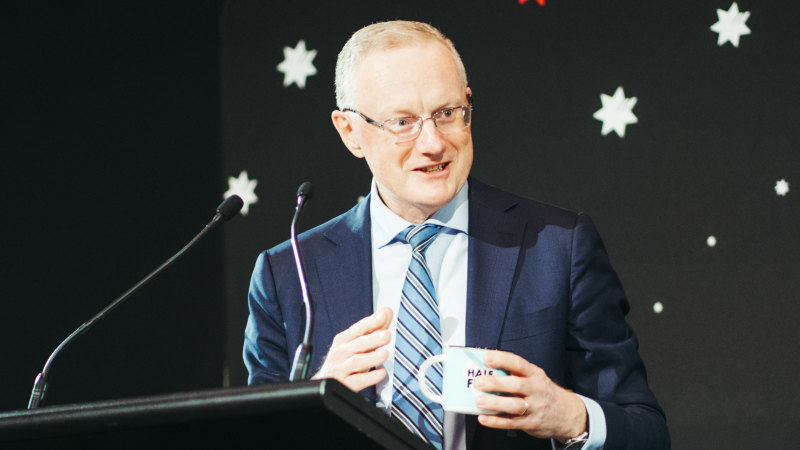
How Philip Lowe was caught on the cusp of history
September 10, 2023Save articles for later
Add articles to your saved list and come back to them any time.
Outgoing Reserve Bank boss Dr Philip Lowe was our most academically outstanding governor, with the highest ethical standards. And he was a nice person. But if you judge him by his record in keeping inflation within the Reserve’s 2 to 3 per cent target – as some do, but I don’t – he achieved it in just nine of the 84 months he was in charge.
Even so, my guess is that history will be kinder to him than his present critics. I’ve been around long enough to know that, every so often – say, every 30 or 40 years – the economy changes in ways that undermine the economics profession’s conventional wisdom about how the economy works and how it should be managed.
Over to you, Michele. Philip Lowe has left successor Michele Bullock with some tough decisions.Credit: Alex Ellinghausen
This is what happened in the second half of the 1970s – right at the time I became a journalist – when the advent of “stagflation” caused macroeconomists to switch from a Keynesian preoccupation with full employment and fiscal policy (the budget) to a monetarist preoccupation with inflation and monetary policy (at first, the supply of money; then interest rates).
My point here is that it took economists about a decade of furious debate to complete the shift from the old, failing wisdom to the new, more promising wisdom. I think the ground has shifted again under the economists’ feet, that the macroeconomic fashion is going to swing from monetary policy back to fiscal policy but, as yet, only a few economists have noticed the writing on the wall.
As is his role, Lowe has spent the past 15 months defending the established way of responding to an inflation surge against the criticism of upstarts (including me) refusing to accept the conventional view that TINA prevails – “there is no alternative” way to control inflation than to cut real wages and jack up interest rates.
If I’m right, and economists are in the very early stages of accepting that changes in the structure of the economy have rendered the almost exclusive use of monetary policy for inflation control no longer fit for purpose, then history will look back more sympathetically on Lowe as a man caught by the changing tide, a victim of the economics profession’s then failure to see what everyone these days accepts as obvious.
Final speeches are often occasions when departing leaders feel able to speak more frankly now that they’re free of the responsibilities of office. And Lowe’s “Some Closing Remarks” speech on Thursday made it clear he’d been giving much thought to monetary policy’s continuing fitness for purpose.
His way of putting it in the speech was to say that one of the “fixed points” in his thinking that he had always returned to was that “we are likely to get better outcomes if monetary policy and fiscal policy are well aligned”. Let me give you his elaboration in full.
“My view has long been that if we were designing optimal policy arrangements from scratch, monetary and fiscal policy would both have a role in managing the economic cycle and inflation, and that there would be close coordination,” Lowe said.
“The current global consensus is that monetary policy is the main cyclical policy instrument and should be assigned the job of managing inflation. This is partly because monetary policy is more nimble [it can be changed more quickly and easily than fiscal policy] and is not influenced by political considerations.”
“Raising interest rates and tightening policy can make you very unpopular, as I know all too well. This means that it is easier for an independent central bank to do this than it is for politicians,” he said.
“This assignment of responsibility makes sense and has worked reasonably well. But it doesn’t mean we shouldn’t aspire to something better. Monetary policy is a powerful instrument, but it has its limitations and its effects are felt unevenly across the community.”
“In principle, fiscal policy could provide a stronger helping hand, although this would require some rethinking of the existing policy structure. In particular, it would require making some fiscal instruments more nimble, strengthening the (semi) automatic stabilisers and giving an independent body limited control over some fiscal instruments.”
“Moving in this direction is not straightforward, but some innovative thinking could help us get to a better place,” Lowe said.
Reserve Bank of Australia Governor Philip Lowe giving his final speech during the Anika Foundation event in Sydney on September 7.Credit: Dion Georgopoulos
“During my term, there have been times where monetary and fiscal policy worked very closely together and, at other times, it would be an exaggeration to say this was the case.”
“The coordination was most effective during the pandemic. During that period, fiscal policy was nimble and the political constraints on its use for stabilisation purposes faded away. And we saw just how powerful it can be when the government and the Reserve Bank work very closely together.”
“There are some broader lessons here and I was disappointed that the recent Reserve Bank Review did not explore them in more depth,” Lowe said.
So was I, especially when two of Australia’s most eminent economists – professors Ross Garnaut and David Vines – made a detailed proposal to the review along the lines Lowe now envisages. (If Vines’ name is unfamiliar, it’s because most of his career was spent at Oxbridge, as the Poms say.)
Central banks around the world, including the Reserve Bank, resorted to unconventional measures during the pandemic.Credit: Bloomberg
But no, that would have been far too radical. Much safer to stick to pointing out all the respects in which the Reserve’s way of doing things differed from the practice in other countries – and was therefore wrong.
In question time, Lowe noted that one of the world’s leading macroeconomists, Olivier Blanchard, a former chief economist at the International Monetary Fund (and former teacher of Lowe’s at the Massachusetts Institute of Technology), had proposed that management of the economy be improved by creating new fiscal instruments which would be adjusted semi-automatically, or by a new independent body, within a certain range.
Lowe also acknowledged the way the marked decline over several decades in world real long-term interest rates – the causes of which economists are still debating – had made monetary policy less useful by bringing world nominal interest rates down close to the “zero lower bound”.
How do you cut interest rates to stimulate growth when they’re already close to zero? Short answer: you switch to fiscal policy.
But what other central banks – and, during the pandemic, even our Reserve Bank – have done was resort to unconventional measures, such as reducing longer-term official interest rates by buying up billions of dollars’ worth of second-hand government bonds.
Lowe said he didn’t think this resort to “quantitative easing” was particularly effective, and he’s right. I doubt if history will be kind to QE.
However, there’s one likely respect in which the ground has shifted under the economists’ feet that Lowe – and various academic defenders of the conventional wisdom – has yet to accept: the changed drivers of inflation. It’s not excessive wages any more, it’s excessive profits.
More about all this another day.
Ross Gittins is this masthead’s economics editor.
Ross Gittins unpacks the economy in an exclusive subscriber-only newsletter every Tuesday evening. Sign up to receive it here.
Most Viewed in Business
From our partners
Source: Read Full Article

